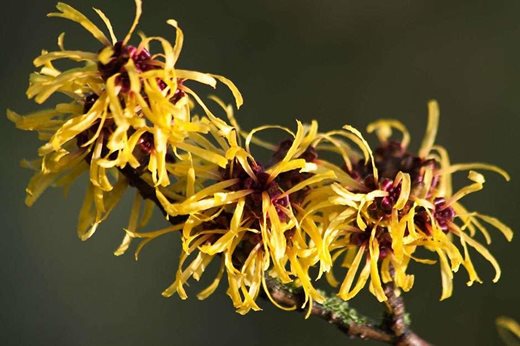 Planting and moving
Planting and moving
Plant roses, but avoid areas where roses were previously grown as this can lead to problems with replant diseases.
Continue to plant bare-root deciduous hedging plants and trees. Stakes should be put in place before the rootball to avoid damage to the roots.
Move established deciduous trees and shrubs, provided the ground is not frozen or waterlogged.
Take note of the most vibrant dogwoods (Cornus), Salix and white-stemmed Rubus shrubs for a display of coloured stems.
Seek out scented winter shrubs, such as Hamamelis ,Sarcococca and Chimonanthus, when visiting gardens open to the public, or in garden centres, and consider planting them for a winter display.
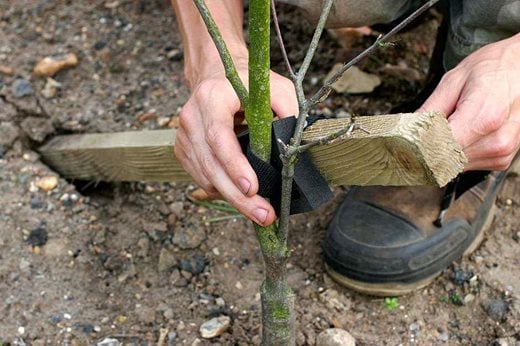 Winter maintenance
Winter maintenance
Check tree ties and stakes on established plants. Replace, tighten or slacken them where necessary.
Firm back newly planted trees and shrubs if they have been lifted by frost heave or strong winds.
Protect newly planted trees, hedges and shrubs from cold winds and frosts. Erect a temporary netting windbreak if there is no natural shelter. Thick dry mulches will protect the roots from cold, and branches can be covered with straw or bracken, and secured with fleece and ties, to protect them from frost damage. A wooden frame with clear polythene stretched over it does a similar job for evergreens without blocking the light, but don’t let the polythene touch the leaves, as condensation could freeze or cause rots.
If there is snow in your area, then you may need to brush it off the branches of conifers, climbers and light-limbed shrubs and trees. Heavy snowfall can splay branches, break limbs and spoil the shape of the tree.
Remove weeds from around the bases of young trees.
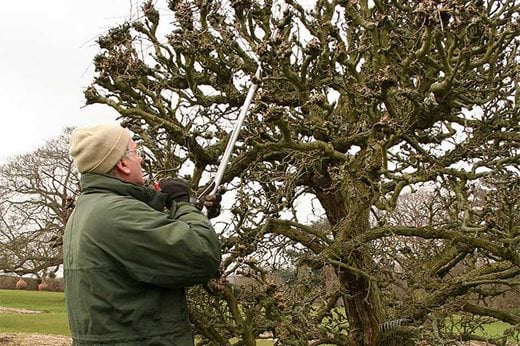 Pruning and training
Pruning and training
Pruning and renovation of many deciduous trees, shrubs and hedges can be carried out from now throughout the dormant season. It is easier to see what you are doing when the branches have no leaves. Suitable examples are: Fagus (beech), Corylus (hazel) and roses. Exceptions are evergreens and tender plants (best left until spring), and Prunus species (e.g. ornamental cherries, plums and almonds) as these are vulnerable to silver leaf disease when pruned in autumn or winter.
If your trees are too large for you to manage the pruning alone, then you may need a tree surgeon. Otherwise take care not to damage the tree when sawing off thicker branches.
Prune Wisteria - cut back the sideshoots shortened by summer pruning to two or three buds. Avoid cutting off flower buds.
Tie wall shrubs and climbers onto their supports to protect them from wind damage. Ornamental vines, ivy, Virginia creeper and Boston ivy can be cut back now – it’s a good idea to keep them away from windows, doors, gutters and roof tiles.
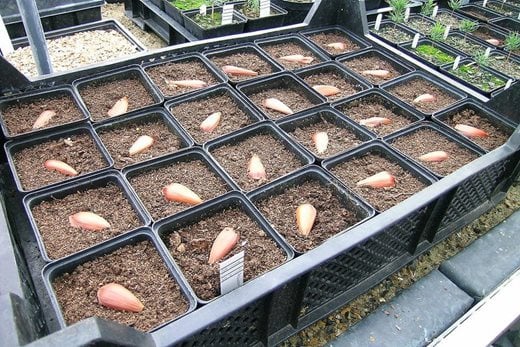 Propagation
Propagation
Seeds of berrying trees and shrubs can still be sown - but be quick, as they need a period of frost to break their dormancy. Examples are Sorbus, Cotoneaster and Pernettya.
Take hardwood cuttings of ornamental shrubs such as Cornus, Salix, Forsythia, Weigela, Escallonia, Rosa, Ribes, Chaenomeles and Elaeagnus. Many deciduous climbers can also be propagated in this way (e.g. Fallopia and Lonicera).
Check hardwood cuttings taken last year. They may need planting out or potting on.
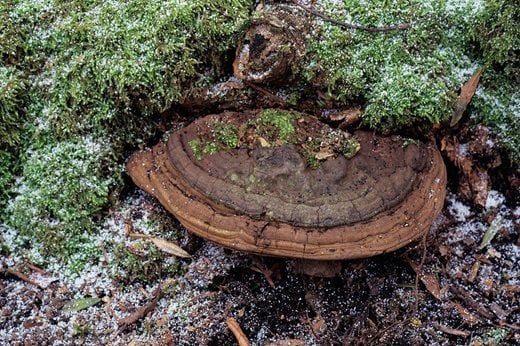 Pest and disease watch
Pest and disease watch
Bracket fungi on trees is visible at this time of year. If the tree is in poor health it is worth calling in a tree surgeon for a professional opinion.
Put rabbit guards around newly planted trees and shrubs to protect the bark from rabbit damage.
Inspect sick-looking box shrubs and holly trees for signs of blight.
Phytophthora root rots can cause dieback on mature trees and shrubs. Wet winter weather and poorly drained soils are likely to encourage this problem on susceptible woody plants.
Coral spot is often noticed once the leaves have fallen from deciduous hedges, shrubs and trees. This problem can be connected with poor ventilation and congested, un-pruned twiggy growth (as found inside clipped hedges).
Check for damage or cankers on deciduous trees while stems and trunks are readily visible. Prune out torn or damaged branches to prevent disease infection.

